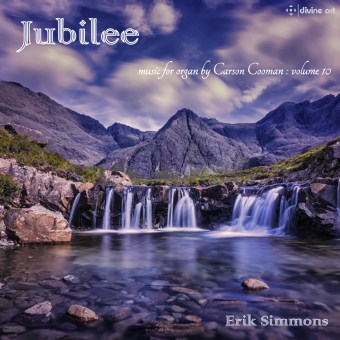Fanfare
I enjoyed a disc of fellow Fanfare critic Carson Cooman’s organ music back in Fanfare 40:5, a disc recorded in Weissenau, Germany. Here, the instrument is the Sonnenorgel of the 13th-century Pfarrkirche St. Peter and Paul in Gorlitz, recorded via the Hauptwerk system. After a fire in 1691, the church was reconstructed with a new organ, finished in 1703 by Eugenio Casparini. It is known as “Sonnenorgel” because of the 17 golden suns on the organ casing. The pedal mixture “Sonnenmixtur” had a trumpet rank, and the pipes for that were held in the hands of angels. The instrument was rebuilt in 1894 by Schlag and Sons, and in 1928 an electro-pneumatic organ was in¬stalled into the case by Sauer. Sadly after World War II that organ was not suitable for restoration, leading to an instrument inspired by the original Casparini, enlarged by a swell manual. The organ was fully complete in 2006. It is, indeed, a magnificent instrument sonically; online photos imply an instrument of great visual beauty to boot.
All of the pieces on this disc were composed in 2017. Cleverly, we begin with two Praeludia whose dedicatees, Philip Hartmann and Andreas Willscher, both have forenames shared with apostles of Jesus. Hence the titles Praeludium in festo S. Philippi apostoli and Praeludium in festo S. Andreae apostoli. The musical material used is from plainchants for the feasts of the two disciples. Both celebrate quiet and mystery, maintaining a highly devotional aspect; Simmons allows them to unfold naturally. The Praeludia segue into another piece that references Andreas Willscher (b. 1955): Cortege, Intermezzo and Litany on the Joseph-Hymnus. The “Cortege” finds the theme used as the basis for a passacaglia, while the harmonic basis inspires the central restrained “Intermezzo” before the “Litany” allows for a bright, celebrational close.
The first three of the six Inventions presented here seem to share a predilection for meditative states; only when we meet the “March” does a sense of momentum assert itself. The concluding “Postlude” offers brightness before we move to the Suite in F, with its memorable octave descent gesture followed by a rising scale that acts as a structural anchor in the opening “Praeambulum.” There is a sister Suite, in G-Major this time, modal harmonies recontextualizing restatements of the same material. This piece is just as strong compositionally, the central “Pastorale-Musette” a joy, the finale, “Jubilee” (from which the disc takes its name), a virtuoso showpiece delivered with aplomb by Simmons.
The name of Andreas Willscher crops up again in reference to a delicious little “Pastorale” on a hymn for St. Joseph that also appeared in Willscher’s Organ Symphony No. 14, “en Jazz”. Enjoying a new harmonization, the chorale is joyously, yet unhurriedly, explored, both harmonically and sonically via the varied stops; even more joyous is the Voluntary on Willscher’s motet Laudate omnes gentes (Psalm 117), resonant and glowing, as is, in fact, the Postludium on Two Themes.
Finally, there comes the Fourth Sonatina. Each movement is named after a German city (Hamburg, Pösneck, Ulm); each city is associated with the organist to whom the movement is dedicated (Andreas Willscher, Hartmut Siebmanns. Philip Hartmann). The aria that sits at the heart of the Sonatina is simply beautiful; the repeated notes act almost as echoes, a wonderful idea.
Beautifully produced and recorded, with more than ample booklet notes by the composer himself, the celebration of the art of Carson Cooman continues.
@divineartrecordingsgroup
A First Inversion Company
Registered Office:
176-178 Pontefract Road, Cudworth, Barnsley S72 8BE
+44 1226 596703
Fort Worth, TX 76110
+1.682.233.4978












